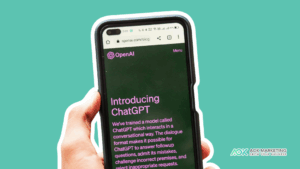In today’s competitive business landscape, generating high-quality Business-to-Business (B2B) leads is more critical than ever. Companies are increasingly turning to content marketing as a strategic approach to attract, engage, and convert prospects. Strategic content marketing involves creating and distributing valuable, relevant, and consistent content to attract and retain a clearly defined audience — and, ultimately, to drive profitable customer action.

Understanding the Importance of Quality Leads
Quality leads are the lifeblood of any successful B2B marketing strategy. Unlike quantity-focused approaches, which may yield a large number of leads with low conversion rates, focusing on quality leads ensures that the prospects are more likely to convert into paying customers. These leads are typically characterized by a strong interest in your products or services, a suitable budget, and a readiness to make a purchase decision.
The Role of Strategic Content Marketing
Content marketing is not just about producing a high volume of content but rather about creating high-quality, targeted content that addresses the specific needs and pain points of your ideal customers. Here’s how strategic content marketing can help generate quality B2B leads:
1. Identifying and Understanding Your Target Audience
The first step in any successful content marketing strategy is to identify and understand your target audience. This involves creating detailed buyer personas that encompass the demographics, behaviors, and pain points of your ideal customers. Understanding who your audience is will help you tailor your content to address their specific needs and challenges, making it more likely that your content will resonate with them and prompt them to engage with your brand.
2. Creating High-Quality, Valuable Content
Once you have a clear understanding of your target audience, the next step is to create high-quality content that provides value to them. This could be in the form of blog posts, whitepapers, case studies, webinars, videos, and more. The key is to ensure that the content is informative, engaging, and relevant to your audience’s needs. High-quality content positions your brand as a thought leader in your industry, builds trust with your audience, and encourages them to seek out your products or services.
3. Utilizing SEO to Increase Visibility
Search engine optimization (SEO) plays a crucial role in ensuring that your content reaches your target audience. By optimizing your content for relevant keywords, you can improve your search engine rankings and increase the visibility of your content. This makes it easier for potential leads to find your content when they search for information related to your industry or offerings. Effective SEO strategies include keyword research, on-page optimization, and building high-quality backlinks.
4. Leveraging Social Media Platforms
Social media platforms are powerful tools for distributing your content and engaging with your audience. By sharing your content on platforms like LinkedIn, Twitter, and Facebook, you can reach a broader audience and drive more traffic to your website. Social media also provides an opportunity to engage with your audience directly, answer their questions, and build relationships with potential leads. Additionally, paid social media advertising can help you target specific segments of your audience and generate more qualified leads.
5. Implementing Email Marketing Campaigns
Email marketing remains one of the most effective channels for nurturing leads and driving conversions. By creating targeted email campaigns that deliver valuable content to your subscribers, you can keep your audience engaged and move them further down the sales funnel. Personalized email content that addresses the specific needs and pain points of your leads can significantly increase your chances of converting them into customers. Additionally, marketing automation tools can help you segment your audience and deliver timely, relevant content to each segment.
6. Measuring and Analyzing Performance
To ensure the success of your content marketing strategy, it’s essential to measure and analyze the performance of your content. This involves tracking key metrics such as website traffic, engagement rates, lead generation, and conversion rates. By analyzing these metrics, you can gain insights into what’s working and what’s not, allowing you to refine your strategy and improve the effectiveness of your content. Tools like Google Analytics, HubSpot, and SEMrush can provide valuable data and help you make data-driven decisions.
7. Aligning Sales and Marketing Efforts
A successful B2B lead generation strategy requires close alignment between your sales and marketing teams. By working together, these teams can ensure that the content created is aligned with the sales process and addresses the specific needs of your leads at each stage of the funnel. Sales teams can provide valuable insights into the pain points and objections of potential leads, which can inform the content creation process. Additionally, marketing can support sales efforts by providing them with high-quality content to share with leads during the sales process.
8. Offering Free Resources and Tools
One effective way to attract high-quality leads is to offer free resources and tools that provide value to your audience. This could include free trials, demos, templates, calculators, and other resources that help your audience solve their problems or achieve their goals. By providing these resources, you can demonstrate the value of your products or services and encourage potential leads to engage with your brand. Additionally, offering free resources allows you to collect contact information from your audience, which can be used to nurture leads and drive conversions.
9. Hosting Webinars and Online Events
Webinars and online events are powerful tools for generating B2B leads. These events provide an opportunity to showcase your expertise, engage with your audience, and address their specific needs and questions. By offering valuable insights and actionable advice, you can build trust with your audience and position your brand as a thought leader in your industry. Additionally, webinars and online events provide an opportunity to collect contact information from attendees, allowing you to follow up with them and nurture them further down the sales funnel.
10. Building Partnerships and Collaborations
Collaborating with other businesses and influencers in your industry can help you reach a broader audience and generate more high-quality leads. By partnering with complementary businesses, you can co-create content, host joint webinars, and share each other’s content with your respective audiences. This not only increases your reach but also builds credibility and trust with potential leads. Additionally, collaborations with industry influencers can help you tap into their audience and attract more qualified leads.
Conclusion
Generating quality B2B leads through strategic content marketing requires a deep understanding of your target audience, creating valuable content, and utilizing various channels to distribute and promote your content. By focusing on quality over quantity, leveraging SEO, PPC, social media, email marketing, and aligning your sales and marketing efforts, you can attract, engage, and convert high-quality leads that drive business growth. Measuring and analyzing your performance, offering free resources, hosting webinars, and building partnerships further enhance your ability to generate and nurture quality leads. In today’s digital age, strategic content marketing is not just an option but a necessity for successful B2B lead generation.
About The Author
Khalid Essam
Khalid is the Chief of Staff at AOK. He collaborates with a team of specialists to develop and implement successful digital campaigns, ensuring strategic alignment and optimal results. With strong leadership skills and a passion for innovation, Khalid drives AOK’s success by staying ahead of industry trends and fostering strong client and team relationships.





